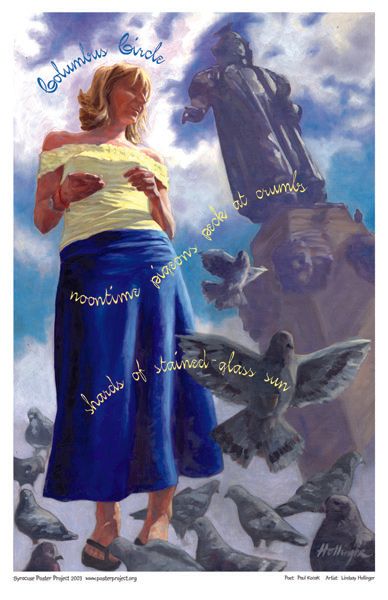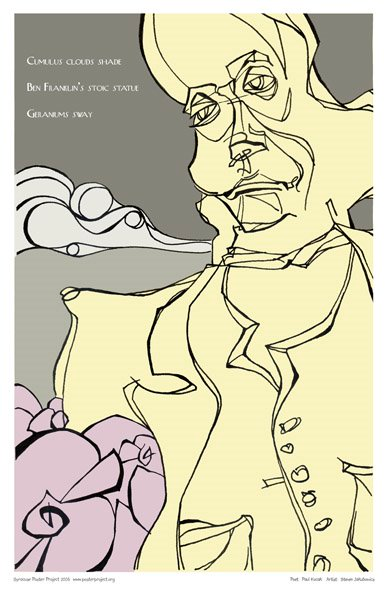
Paul Kocak
contributor to 4 posters

Poet
In the mid 1980s, I was working in publishing in New York, and a friend, a spiritual mentor, suggested I write haiku as a spiritual exercise. So I did. I approached haiku as prayer almost, a way of finding spirituality in the moment, in ordinary things.
Since then, I've done it periodically. It helps me to see the whole fabric of the world in a small thing. For instance, a couple of days ago, I was having a difficult time at work. I stared out the window, and there was a tree with red berries on it covered with snow. I was having a bad day, and I said to myself, “Everything is perfect for that little tree right now, despite the turmoil I'm having, despite the cold and the snow.”
I guess you could say it takes me out of myself to see that interconnectedness. It really does work.
Poet
For me, writing haiku poetry is about observing and reflecting. In particular, this project celebrates a sense of place. As I see it, the poems represented on these posters capture specific Syracuse-area places at a moment in time as viewed by one viewer (and then "translated" by an illustrator).
So, when I am trying to conjure up poems for this public-art enterprise, I walk around more attentive. I am receptive for places that will catch my attention, that will stop me in my tracks. In this case, I had been working downtown. I looked up. I saw the gargoyle. I knew people had been tracking the local falcons. I often take a piece of paper in my pocket (a receipt, for example) and do a draft. I tap syllables with my fingers. "Gargoyle": two or three?
Poet
I work near Franklin Square, and in the warm weather I often eat lunch there. I seem to write haiku, or anything for that matter, in bursts. Call it haiku-binge-writing. During these times, my awareness is heightened, looking for small things that could serve as the focus of a poem.
Just seeing everything in that park on a beautiful spring day—it struck me. There's a great sense of place at Franklin Square. It's one of Syracuse's unknown jewels. That day, I was caught by waves of startlingly red geraniums, offset by deep blue sky dotted with rolling cumulus clouds. The moving clouds created shadows.
Against the movement of clouds and swaying flowers stood the still and silent statue of the great Ben Franklin. But if you walk around the park, you'll find that Mr. Franklin is not so silent, after all. One-liners—maxims, aphorisms—of his are tucked in secret places.
Poet
It was late summer, and I was driving by downtown, maybe on a street, maybe even on 690. And St. Paul's had just put in a new roof. The copper hadn't turned green at all. It was at sunset, so the roof was a bright orange honey-colored copper, with the sun blasting on it. It caught my eye, and I think I started composing some lines right away. I wrote them down when I got home.
Vespers is evening prayer, usually sung. I don't think they were conducting an evening prayer, but they could have been. In my mind, that's what it evoked. So I think this was my way of trying to marry the image of a beautiful, arresting sight with a kind of prayer. Call it a prayer of awareness or thanksgiving for that moment.